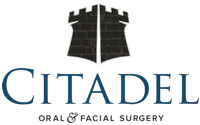Sleep Apnea
Sleep Apnea is an increasingly common diagnosis. In fact, many people are unaware of their condition.
People with obstructive sleep apnea (OSA) have disrupted sleep and low blood oxygen levels. When obstructive sleep apnea occurs, the tongue and/or palate may fall against the back of the throat. This blocks the upper airway and breathing stops. When the oxygen level in the brain becomes low enough, the sleeper partially awakens, the obstruction in the throat clears and the flow of air starts again, usually with a loud gasp or grunt. Severe snoring is one of the most frequent symptoms, and is often noted by someone else sleeping in the same room.
Repeated cycles of decreased oxygenation can lead to very serious cardiovascular problems. Additionally, these individuals suffer from excessive daytime sleepiness, depression, and loss of concentration.
Some patients have obstructions that are less severe called Upper Airway Resistance Syndrome (UARS). In either case, the individuals suffer many of the same symptoms.
The first step in treatment resides in recognition of the symptoms and seeking appropriate consultation. Oral and Maxillofacial Surgeons offer consultation and treatment options.
In addition to a detailed history, the doctors will assess the anatomic relationships in the maxillofacial region.
With radiographic (“x-ray”) analysis, our doctors may ascertain the probable level of obstruction. Sometimes a naso-pharyngeal exam is done with a flexible fiber-optic camera. To confirm the amount of cardiovascular compromise and decreased oxygenation levels, a sleep study may be recommended to monitor individuals overnight to confirm the diagnosis and assess the severity.
There are several treatment options available. An initial treatment may consist of behavioural modifications, using a nasal CPAP machine that delivers pressurized oxygen through a nasal mask to limit obstruction at night, or a dental appliance that tries to reposition the lower jaw further forward while sleeping.
One of the surgical options is a uvulo-palato-pharyngo-plasty (UPPP), which is performed in the back of the soft palate and throat. A similar procedure is sometime done with the assistance of a laser and is called a Laser Assisted uvulo-palato-plasty (LAUP). In other cases, a radio-frequency probe is utilized to tighten the soft palate.
In some cases, the bones of the upper and lower jaw may be repositioned to increase the size of the airway (orthognathic surgery). This procedure is done in the hospital and requires a 1 to 2 day stay. Though it may sound “extreme”, it is also the most successful option for severe sleep apnea and is actually a very safe and commonly performed procedure by our surgeons. For more information see here: orthognathic surgery.
OSA is a very serious condition that needs careful attention and treatment. Most major medical plans offer coverage for diagnosis and treatment. Many treatments involve a team of professionals, so patients may be seen by specific individuals at the request of your Citadel surgeon prior to any surgery or treatment being done.
Please review our section on post-operative instructions.

